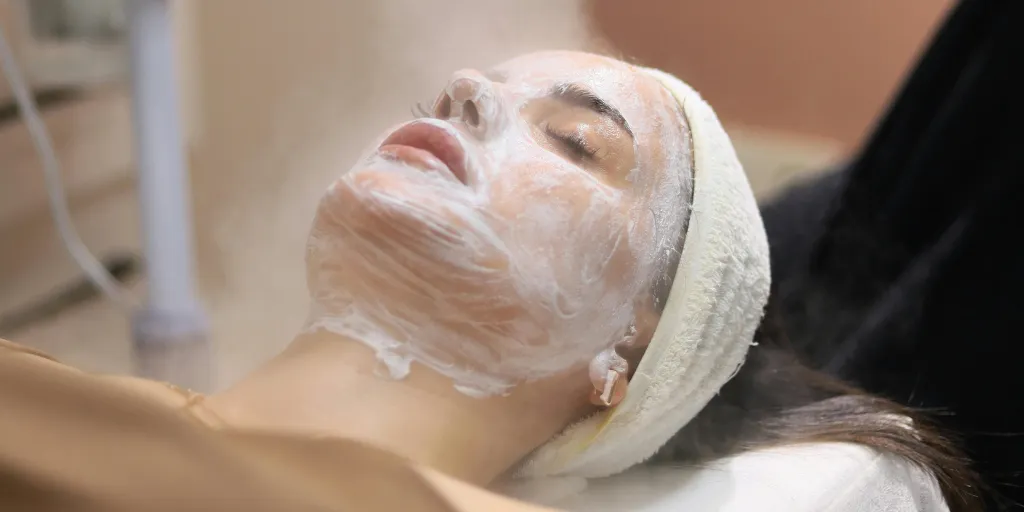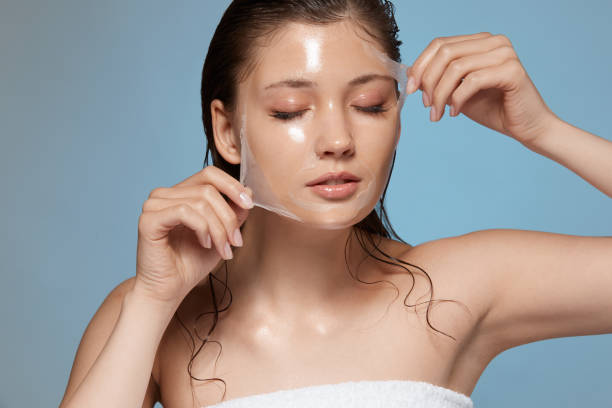
Anti-Aging Facials vs. Chemical Peels
Two of the most popular options—anti-aging facials and chemical peels—offer distinct paths to rejuvenation. But deciding which is right for your skin isn’t just about chasing the latest trend or following an influencer’s routine. It’s about understanding your skin’s unique needs, sensitivities, and goals.
For example, imagine prepping for a major life event—your skin looks tired, dry, and a little lackluster. A facial might be your go-to for that instant glow. But if you're looking at deeper issues like sunspots, fine lines, or acne scarring, a chemical peel might offer more transformative results.
In this post, we’ll break down what each treatment does, who it's best for, and how they can work together—especially when paired with supporting treatments like Microneedling or LED Light Therapy. We’ll also point you back to the bigger picture with Aging, Fine Lines & Skin Rejuvenation.

Anti-aging facials go well beyond a relaxing spa session. These treatments are customized to your skin's current condition and future goals. A well-structured facial includes multiple steps—each designed to cleanse, exfoliate, hydrate, and stimulate your skin.
These facials often include enzyme exfoliation to remove dead skin, collagen-rich serums to restore bounce, and even LED red light therapy for stimulating deeper skin repair. For instance, a popular option is the HydraFacial, which combines cleansing, exfoliation, hydration, and antioxidant infusion in one session. This facial not only delivers visible results immediately but also improves skin health over time with consistent sessions.
A client I worked with had been dealing with dull, dehydrated skin in her late 40s. After just three monthly facials that included peptides and LED therapy, she reported not just a smoother appearance but also a more confident, youthful glow.

Veles-Studio via Pexels
Chemical peels offer a more intensive approach to skin resurfacing. Depending on the strength and acid used, they can improve surface dullness, tackle wrinkles, fade pigmentation, and refine texture in just a few treatments.
You might think of a peel as something harsh, but there are many levels. A light glycolic acid peel can refresh your skin over lunch, while a deeper TCA peel targets years of sun damage and lines. For example, clients dealing with melasma often benefit from Jessner’s peels, while acne-prone individuals respond well to salicylic acid peels.
These treatments work by accelerating the skin's natural exfoliation process. Picture it like a reset button—shedding the outer layer to reveal newer, healthier skin underneath. Over time, repeated treatments improve cellular turnover, boost collagen production, and reduce visible signs of aging.
Professionally administered peels are often followed by downtime—but that’s where combining it with a calming facial or LED therapy can help soothe and restore skin faster, enhancing results. Want to explore more? Visit LED Light Therapy Benefits for Fine Lines for insights on pairing light energy with exfoliation.
To make your decision easier, here’s a comparison of anti-aging facials vs. chemical peels based on key criteria:

So how do you know if a facial is right for you?
Choose a facial when:
You want no downtime and instant glow.
Your skin feels tight, dry, or dull.
You’re prepping for an event (facials give that smooth makeup base).
You need hydration during seasonal changes (especially winter).
You’re using retinoids or acids already—peels may be too much.
Facials are great for maintenance and are often recommended monthly as part of a consistent routine. Many estheticians recommend following up a deeper treatment like microneedling or chemical peels with a calming facial 5–7 days later to soothe and restore skin balance.
Go for a chemical peel when:
You want long-term correction, not just maintenance.
You’re targeting hyperpigmentation, acne scars, or deep wrinkles.
Your skin has plateaued with topical products.
You want smoother texture and more even skin tone.
You have sun-damaged skin or melasma.
Absolutely. Many skincare experts advocate combining these treatments for enhanced results. Here’s how to structure your schedule:
Month 1: Light chemical peel
Month 2: Anti-aging facial with LED therapy
Month 3: Microneedling
Month 4: Back to peel, repeat cycle

This rotation supports exfoliation, hydration, and collagen production—all major players in your anti-aging strategy. Just be sure to work with a licensed esthetician to ensure your skin isn’t overstimulated.
Check out Microneedling: Boost Collagen & Smooth Wrinkles for more ideas on how to mix-and-match your skincare tools strategically.
Skincare doesn’t end when you leave the clinic. Here’s what you should do after either treatment:
After a Facial:
Avoid makeup for 24 hours so your skin can breathe.
Hydrate generously—both topically and by drinking water.
Use a barrier-repair cream with ceramides or hyaluronic acid.
Stay away from exfoliants or acids for at least 3–5 days.
After a Peel:
Avoid the sun like it’s your ex—wear SPF 50 every day.
No picking or peeling—let dead skin shed naturally.
Skip actives (retinoids, AHAs/BHAs) for at least a week.
Use a simple cleanser and ultra-gentle moisturizer.
Even the best treatment can be ruined by poor aftercare or bad habits. Here are some pitfalls to dodge:
Over-exfoliating at home before or after treatment.
Skipping sunscreen, especially post-peel.
Using actives too soon after a treatment.
Booking back-to-back treatments without downtime.
Not following professional advice for aftercare.
Think of these treatments as investments—and like any investment, they require upkeep and patience.
After that, Maria committed to monthly anti-aging facials that included LED red light therapy, collagen-rich masks, and gentle lymphatic massage. These treatments worked together to hydrate, firm, and rejuvenate her skin without causing irritation.
Within three months, the changes were undeniable—her skin tone was brighter, texture noticeably smoother, and breakouts had reduced. Even her coworkers noticed the glow on Zoom. What made the biggest difference wasn’t one single treatment, but the consistent, layered approach tailored to her skin’s needs.
FAQ Section
Q1: Can I get both a facial and a chemical peel in the same session?
A: It depends on the strength of the peel and your skin condition. Some spas offer mild peels during facials, but for stronger peels, it’s best to space treatments out by 1–2 weeks.
Q2: Which treatment is better for acne scars?
A: Chemical peels—especially those with salicylic or glycolic acid—are generally more effective. Facials can help maintain hydration and reduce inflammation between peels.
Q3: Will my skin purge after a peel?
A: Sometimes. If you’re new to exfoliating acids, breakouts can occur temporarily as your skin purges clogged pores.
Q4: How often should I get each treatment?
A: Facials can be done monthly. Chemical peels should be spaced out every 4–8 weeks depending on strength and skin type.
Q5: Are these treatments safe for darker skin tones?
A: Yes—but caution is needed with medium-to-deep chemical peels. Always consult a provider experienced in treating diverse skin tones.
Whether you're team facial or team peel, the truth is both treatments offer proven pathways to rejuvenated, healthy skin. Facials are perfect for consistent care, while peels push the reset button when your skin needs deeper correction.
Pair either with Microneedling or LED Light Therapy for results that go even further. And if you're not sure where to start, begin with our guide: Aging, Fine Lines & Skin Rejuvenation to build a skin strategy that evolves with you.
Whether you’re all about that instant facial radiance or craving the deep-skin renewal a peel delivers, the first step is finding what works best for you. Let’s start your journey to radiant, youthful skin—on your terms.
References for this Information:
American Academy of Dermatology. (n.d.). Chemical peels: What to expect. Retrieved from https://www.aad.org
Cleveland Clinic. (2023). Facials vs. chemical peels: Which is better? Retrieved from https://my.clevelandclinic.org
Healthline. (2023). Chemical peel benefits and risks. Retrieved from https://www.healthline.com/health/chemical-peel


Comments
0 comments